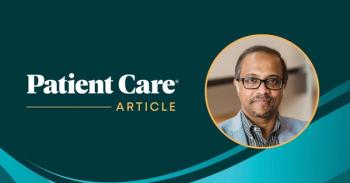
PreP in Men Who Have Sex With Men
Interest in preexposure prophylaxis is high among a diverse population of men who have sex with men who are at risk for HIV infection.
Interest in preexposure prophylaxis is high among a diverse population of men who have sex with men (MSM) who are at risk for HIV infection when PrEP is offered in STD and community health clinics, according to a new study.
PrEP is the first biomedical intervention with proven efficacy to reduce HIV infections in MSM and transgender women. “Modeling studies suggest PrEP could substantially reduce HIV incidence among MSM in the United States and may be cost effective if targeted to the highest risk populations. However, little is known about levels of interest and characteristics of individuals who elect to take PrEP in clinical settings,” state the researchers, led by Stephanie E. Cohen, MD, MPH, University of California, San Francisco, Department of Medicine, Division of Infectious Diseases.
The researchers reported on the US PrEP Demonstration Project, a prospective open-label cohort study assessing PrEP delivery in municipal STD clinics in San Francisco and Miami and a community health center in Washington, DC. HIV-uninfected MSM and transgender women seeking sexual health services at participating clinics were offered up to 48 weeks of emtricitabine/tenofovir for PrEP.
After an assessment, 921 participants were potentially eligible and 557 (60.5%) were enrolled. Almost all (98%) enrolled participants were MSM. At baseline, about two-thirds (63.5%) reported condom-less receptive anal sex in the previous 3 months.
A multivariable analysis found that participants from Miami or DC, those who were self-referred, those with previous PrEP awareness, and those reporting more than 1 episode of anal sex with an HIV-infected partner in the last 12 months were more likely to enroll.
“Despite early reports of slow PrEP uptake in the United States, we show high levels of interest in PrEP among MSM offered PrEP as part of a comprehensive prevention program in STD clinics and a community health center. Almost half of eligible clinic-referred clients, most of whom had never heard of PrEP, and 87% of self-referrals enrolled in The Demo Project,” the researchers state.
PrEP uptake was high across sites, age groups, race/ethnicities, and levels of education. Previous surveys of MSM have indicated high levels of willingness to use PrEP if it is efficacious and provided at low or no cost. “This suggests that previous ‘slow uptake’ may have been because of a lack of PrEP knowledge and availability, and efforts to facilitate both can lead to high uptake of PrEP among at-risk MSM,” they state.
The researchers highlight the role that STD clinics and community health centers play in expanding PrEP access nationwide, but noted that additional strategies are needed to increase community awareness about PrEP and engage those at risk in PrEP programs. They also stressed adherence to PrEP is critical to its effectiveness. “Appropriate PrEP uptake among those at highest risk, coupled with high adherence, will help maximize PrEP's public health impact,” they conclude.
The researchers published their
Newsletter
Enhance your clinical practice with the Patient Care newsletter, offering the latest evidence-based guidelines, diagnostic insights, and treatment strategies for primary care physicians.















































































































































































































































































